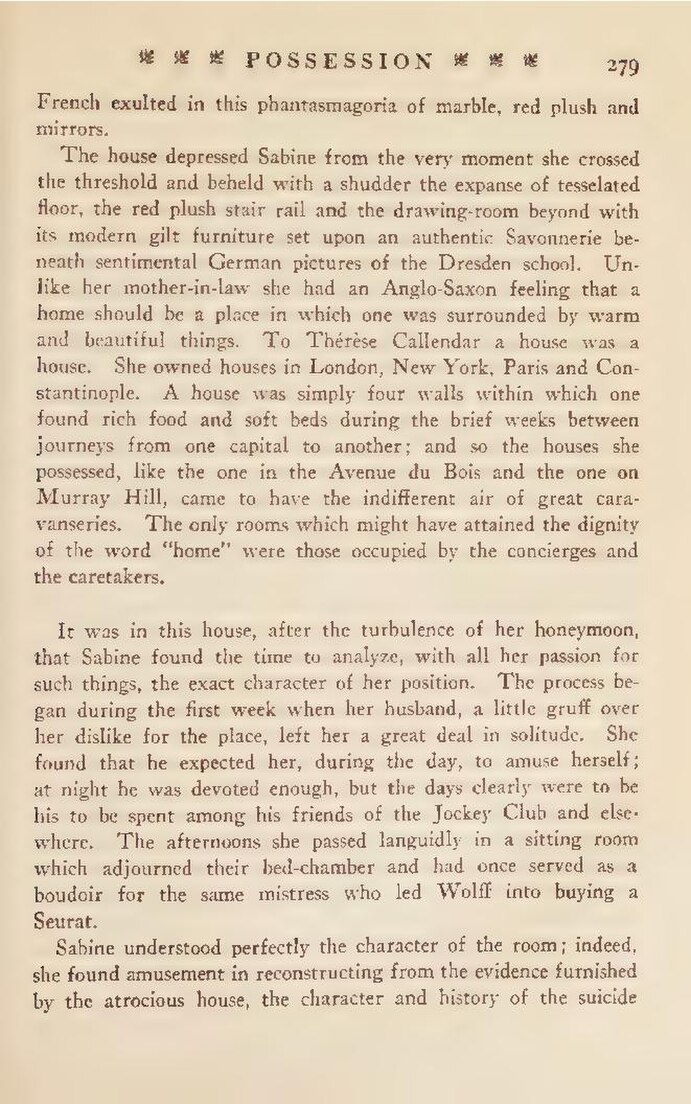French exulted in this phantasmagoria of marble, red plush and mirrors.
The house depressed Sabine from the very moment she crossed the threshold and beheld with a shudder the expanse of tesselated floor, the red plush stair rail and the drawing-room beyond with its modern gilt furniture set upon an authentic Savonnerie beneath sentimental German pictures of the Dresden school. Unlike her mother-in-law she had an Anglo-Saxon feeling that a home should be a place in which one was surrounded by warm and beautiful things. To Thérèse Callendar a house was a house. She owned houses in London, New York, Paris and Constantinople. A house was simply four walls within which one found rich food and soft beds during the brief weeks between journeys from one capital to another; and so the houses she possessed, like the one in the Avenue du Bois and the one on Murray Hill, came to have the indifferent air of great caravanseries. The only rooms which might have attained the dignity of the word "home" were those occupied by the concierges and the caretakers.
It was in this house, after the turbulence of her honeymoon, that Sabine found the time to analyze, with all her passion for such things, the exact character of her position. The process began during the first week when her husband, a little gruff over her dislike for the place, left her a great deal in solitude. She found that he expected her, during the day, to amuse herself; at night he was devoted enough, but the days clearly were to be his to be spent among his friends of the Jockey Club and elsewhere. The afternoons she passed languidly in a sitting room which adjourned their bed-chamber and had once served as a boudoir for the same mistress who led Wolff into buying a Seurat.
Sabine understood perfectly the character of the room; indeed, she found amusement in reconstructing from the evidence furnished by the atrocious house, the character and history of the suicide
